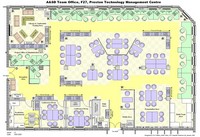Productive Friction and Innovation
 In some recent discussions I have been introduced to the concept of “productive friction”, which is an effect that’s created when team members with a diverse background get together. It happens for example when people from different cultures or academic disciplines or companies work together to solve a problem and it increases the level of innovation. John Hagel describes it in his book The Only Sustainable Edge and in his Article in the Harvard Business Review.
In some recent discussions I have been introduced to the concept of “productive friction”, which is an effect that’s created when team members with a diverse background get together. It happens for example when people from different cultures or academic disciplines or companies work together to solve a problem and it increases the level of innovation. John Hagel describes it in his book The Only Sustainable Edge and in his Article in the Harvard Business Review.
This recent article in Newsweek describes the effect, and gives some practical and simple advice on how to take advantage of it in your projects:
What they found was that the most successful teams did two things right. First, they attracted a mixture of experienced people and those who were newcomers to whichever field they were in. That’s not surprising–the need for fresh blood has long been recognized as an important ingredient in success. The second criterion, though, was far less obvious. What successful teams had in common was at least a few experienced members who had never collaborated with each other. “People have a tendency to want to work with their friends–people they’ve worked with before,” says Luis Amaral, a physicist at Northwestern …





